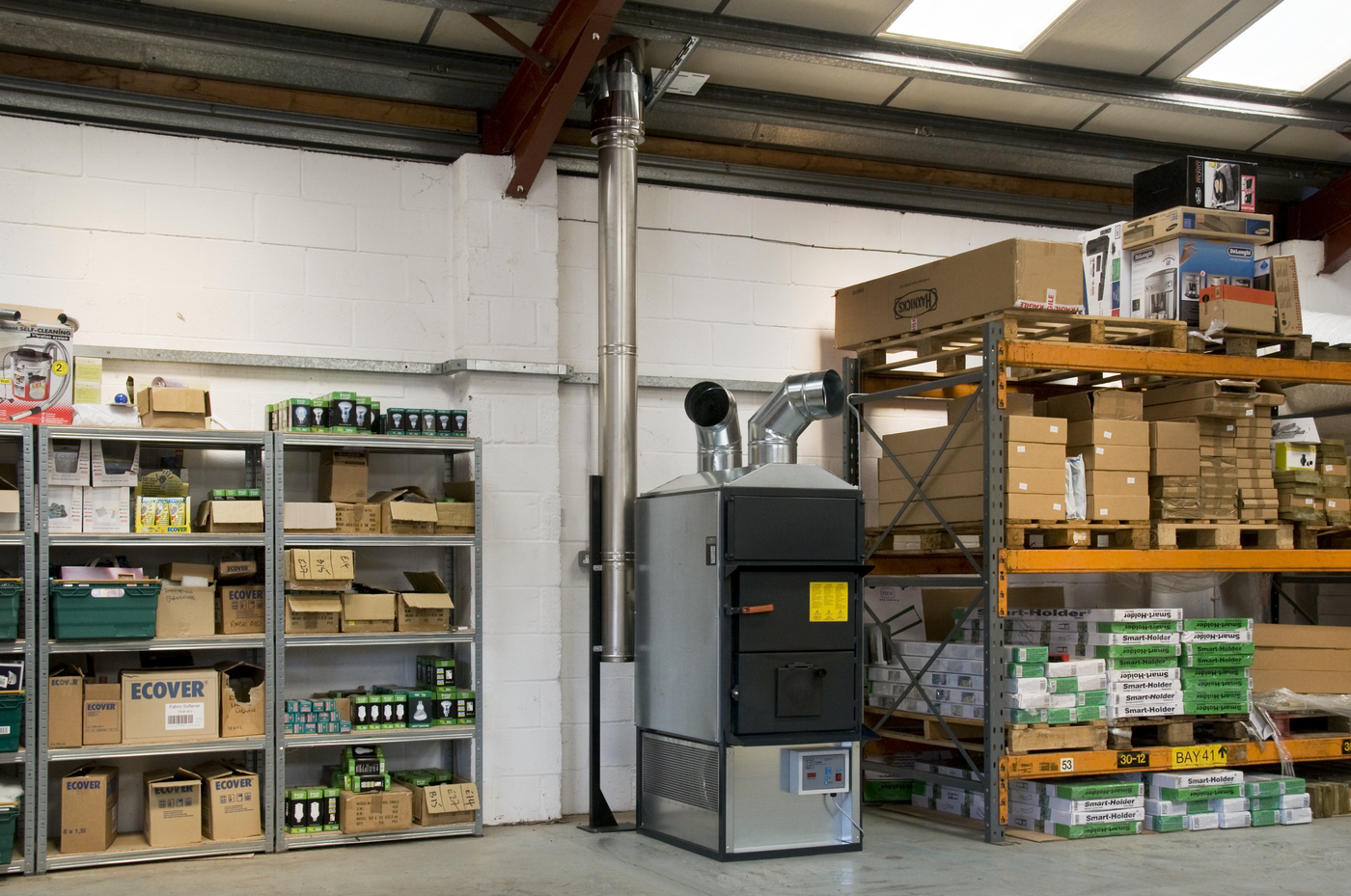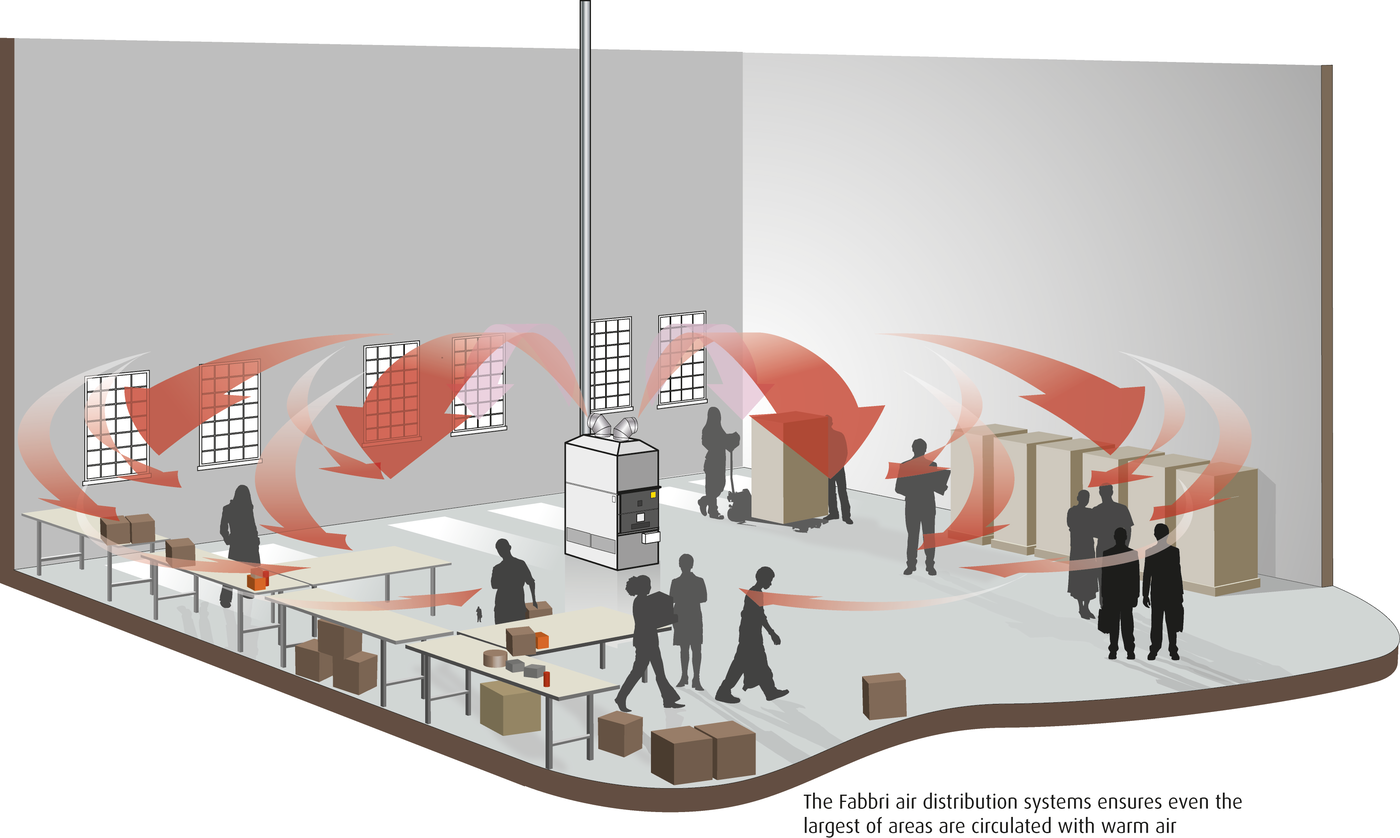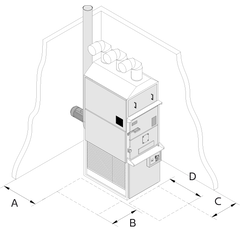How to Install
Free Standing
You can install and run these units almost anywhere. They are designed to heat large areas by funneling clean hot air directly into the surrounding area. Exhaust gasses need to be vented through the wall or roof to the outside.
Versatile
The Zero Ridge hot air heater is very versatile. It can be located almost anywhere.
It has two simple requirements;
- located somewhere a flue can be exited from the building
- located where the colder air can be drawn in and blown out.


Location
The space heater can be situated in almost any dry location.
- Any solid stable floor.
- Chimney needs to exit the building and meet any local building regulations.
- A designated safe zone around the space heater is advised.
Your space heater should be positioned with the recommended minimum clearances. We recommend that your heater is installed centrally within the building. This removes the requirement for further ducting, which will allow you to heat the largest of premises effortlessly and efficiently.

Where to position
It is important to install your hot air heater in a position away from regular traffic from people and machinery.
We would recommend a dedicated marked floor area reserved for only the heater.
Fuel storage should be local but at a distance to meet your own fire regulations.
Recommended Clearances Click Here
 Chimney. Why it is needed and how to install.
Chimney. Why it is needed and how to install.
A chimney/flue is required to exhaust the smoke from the combustion chamber to the outside atmosphere.
See our range of twin wall, stainless steel, acid resistant flue kits and flue components here.
The chimney should always rise with no more than 45deg angle from vertical. It must not be closer than 2" (50mm) from inflammable materials.
It should be supported as it passes through the roof and a roof flashing should be installed to prevent water ingress.
We do not recommend a chimney cowl.
Access for cleaning the flue and chimney should be provided.

